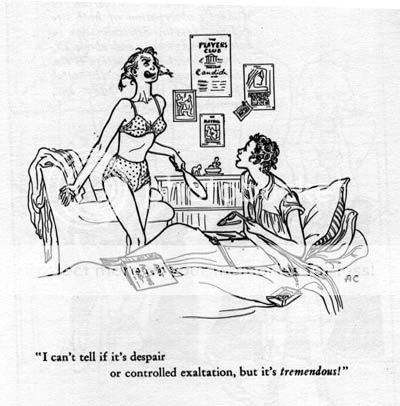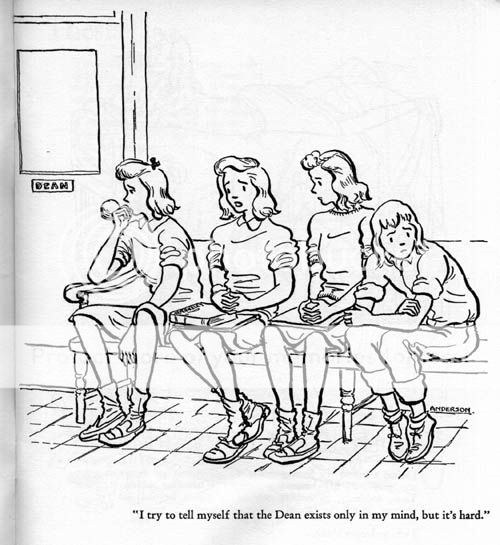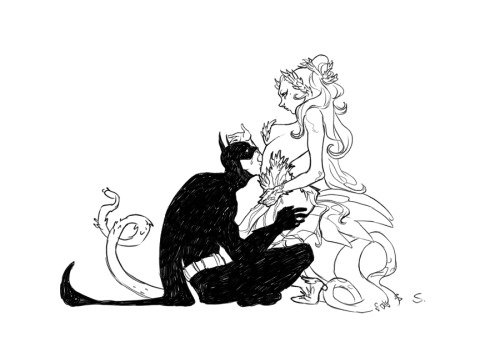
Asterios Polyp
David Mazzucchelli, writer/artist
Pantheon, June 2009
344 pages, hardcover
$29.95
Pre-order it from Amazon.com
An extraordinarily easy book to read, Asterios Polyp is, I’m finding, a nearly equally extraordinarily difficult book to talk about. Frankly I think I just feel out of my depth. For example, cartoonist David Mazzucchelli has a long history of making art comics in Europe, and I’ve flipped through a few in the store or off my buddy Josiah’s shelf, but the only Mazzucchelli comics I’ve read from start to finish prior to this book are Batman Year One, Daredevil: Born Again, and that little comic with the spilled jar of ink he did for The Comics Journal Special Edition: Cartoonists on Cartooning. But hey, fine, I can fake it, I can certainly locate Asterios Polyp within the tradition of alternative comics. For exaple, it uses color and, to a certain extent, character design like a Dash Shaw webcomic or MOME contribution; it mixes imagery with external narrating text like Chris Ware, only with several orders of magnitude more room to breathe on the page, like Ware filmed in slow motion. That, I get.
What I’m having harder time with, where I feel really out of my depth, is in trying to locate the book’s story content. Asterios Polyp is a highly lauded, award-winning “paper architect,” i.e. a guy whose designs are awesome but have never actually been built, who divides his time between Manhattan and the Ithaca, NY university where he is a professor. We join his story already in progress, as a fire consumes his ratty, messy, porn(?)-soundtracked bachelor pad. Asterios does not pass Go, does not collect $200, proceeds directly from fleeing his apartment in the rain with his wallet and a handful of knicknacks and watching the fire department fight the fire down into the subway and back up and out at the Port Authority, where he takes a bus to the middle of nowhere and gets the first job he can find (as an auto mechanic) and crashpad he can find (renting a room from his boss at the auto shop). From there we bounce back and forth between revelatory events in the present day and key events in the life that led him there, mostly having to do with his ill-fated relationship with the talented but somewhat timid sculptor he was once married to.
In other words, it’s very Woody Allen, very Philip Roth, very New Yorker. A sophisticated urban aesthete unsuccessfully balances the life of the mind with the life of his weiner and then wonders where it all went wrong; his life is contrasted with that of the spirited younger woman he can never quite get a handle on and various other sophisticated urban aesthetes whose arrogance and eccentricity he deplores yet cannot see within himself. And there’s my problem: I know enough about that stuff to recognize the template, but I don’t know enough of it to know if it goes beyond using the template into wholesale swiping and/or rote recapitulation. The best I can do is say “Well, this reminds me somewhat of the Woody/Alan Alda bits in Crimes & Misdemeanors.” I’m simply not well-read enough in this area to comment beyond that. Ask me to speak authoritatively about the next Neil Marshall movie and I can probably handle that, but this? Donnie, you’re out of your element.
What I can say with confidence, however, is that I enjoyed that story immensely. And a big part of that is because this isn’t a Woody Allen film or a Philip Roth novel–it’s a comic, and there’s no mistaking it. Yeah, the basic story could be told in other ways, but if you wanted an illustration of that old saw that you should be able to look at a comic and determine why it’s a comic and not a movie pitch or a short story, look no further. Mazzucchelli clearly had a blast drawing this thing.
My favorite ambitious graphic novels of recent vintage have been pretty manic and information-heavy in terms of the visual approach–Theo Ellsworth’s Capacity and Josh Cotter’s Skyscrapers of the Midwest spring to mind, and even Dash Shaw’s Bottomless Belly Button feels dense and claustrophobic compared much of his other recent work, if only for the lack of color. Asterios Polyp, on the other hand, is airy and light from start to finish, like giving your eyeballs a breath of fresh air. There are all kinds of panel layouts, splash pages, and stand-alone images here, popping right off the big white pages, and the CMYK colors are just a pleasure to look at.
Meanwhile, it’s almost unspeakably clever. Mazzucchelli gives each major character and setting its own color scheme, that’s apparent from the start–Asterios is bright blue, while his wife Hana is bright pink. But oh, the places Mazzucchelli goes with that! By the time Asterios takes Hana to meet his mother and invalid father, he’s wearing a pink checkered jacket, while she has on a blue shirt. In a passage meant to illustrate how our memories slowly refine our original experiences “because every memory is a re-creation, not a playback,” Asterios’s remembered Hana slowly morphs from having a pink shirt on against a white background to wearing a blue shirt against a blue background. And in a much later scene which I’m going to try hard not to spoil, where the two encounter each other long after their divorce and after myriad transformative experiences, the color scheme is totally different–all oranges and greens. Meanwhile, “neutral zones” in both dreaming and waking life are yellow and purple. And let me assure you that as far as the use of color goes, that’s just the tip of the iceberg.
Then there are the countless clever references to the history and art of cartooning. Given our hero’s occupation and preoccupations, there are quite a few mini-essays on architecture, philosophy, design, music…and they’re drawn and lettered like something out of Understanding Comics. A Latina chef swats flies on the ceiling and looks like she could have gotten off the plane from Palomar yesterday, while her band’s drummer sports a “Los Bros” sticker on his drumkit. Asterios’s dapper in-his-youth father looks like he stepped out of a Seth comic. The Midwesterners who take Asterios in–Stiff Major and his zaftig wife Ursula, and no, Mazzucchelli is clearly not above having some Vonneguttian fun with names–could be thrown up on the screen in a Disney/Pixar production tomorrow. Hana I can’t quite put my finger on, but she’s got a distinct ’50s/’60s illustration vibe, part Charles Addams part something else I’m too slow to pick up. Asterios himself is given to standing in profile and holding a cigarette like Eustace Tilley holds his monocle. His teaching career reads like Art School Confidential from the professor’s perspective. (Student: “I’m thinking about adding fenestration to this planar surface…?” Asterios: “How about just putting a couple of windows in that wall?”)
None of this would matter, or at least it would matter very little, if the comic weren’t a series of emotional hooks and twists and high points and explosions, which it is. The dream sequences are uniformly strong, with one involving a flooded subway station-cum-dock so evocatively drawn–thick washes of purple ink, rough crosshatching for one of the first times in the whole book–that I could practically hear the echoing slosh of the water in the tunnels. Asterios’s unique, virtually constant headshape (how have I not talked about this until now?) essentially requires him to be drawn in profile, so the few times we see him turn toward us (again in a dream sequence, notably!) are stop-and-pay-attention moments. The book’s bravura sequence (you’ll hear about this a lot) condenses the couple’s entire life together into a series of snapshot images of Hana’s various movements and bodily secretions; here’s one case where my familiarity with this technique bred nothing but admiration for seeing it so well done. The ending…I’ll say I imagine it will be controversial and leave it at that, but I got a kick out of it.
The real knockout moment for me, though, came during the pivotal argument that stories like this inevitably include, the storm that built for years yet ultimately came out of nowhere and nothing was the same after that. You spend the build-up to it noticing that something is awry, something in the way Hana has been drawn, something in the way there seem to be two or three things going on at once in the interactions between Hana, Asterios, and the other characters involved (including a memorable little imp named Willy Ilium in the book’s Clare Quilty role). Once it gets going, once the pink-and-blue color scheme starts shifting appropriately and the linework and coloring get scratchier and choppier and angrier, you’re rooting for Hana all the way, you think that finally the beef you’ve been accumulating on her behalf is going to get the apocalyptic airing it deserves. And then…and then…BAM, a line you just did not see coming at all, making it all the more devastating, because after all, neither did Asterios. I think this particular exchange may open the book up to charges that it embraces the same sexism it nominally deplores in its characters, but to me it’s the human element that comes through, not the gendered one. I read this scene and said “My God” out loud on the train. (You really need to read the book to get what I’m talking about, I suppose, and it doesn’t come out until June so unless you somehow ended up with a review copy months ago like I did I guess that’s difficult, but do me a favor, bookmark this and come back later and see if you think I’m right, okay?)
I may not know ahhht, is I suppose what I’m saying, but I know what I like. And I like Asterios Polyp a lot. It’s certainly a book to savor. I suspect it’s a book to treasure. I guess it wasn’t that hard to talk about after all.


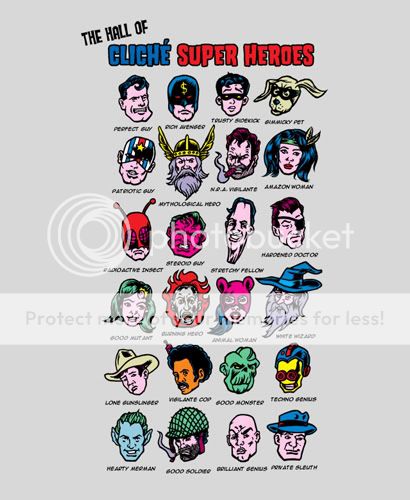




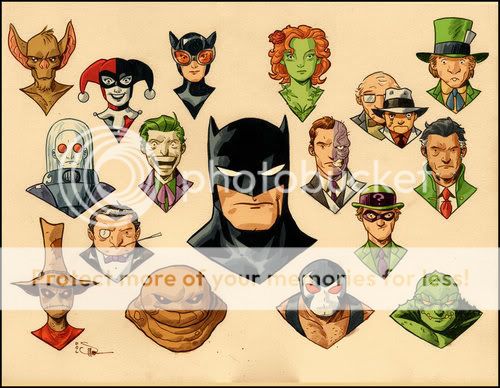
 First Time
First Time